A Complete Manual for Conducting International Flight Operations
TERPS vs. Pans Ops Instrument Procedures
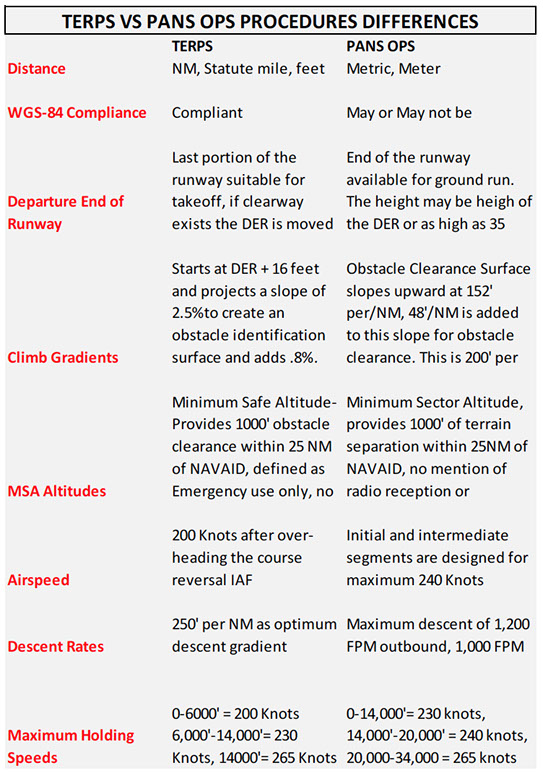
TERPS vs. PANS OPS
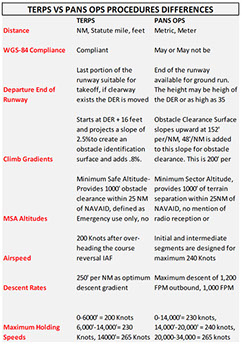
TERPS vs. PANS OPS Procedures Differences
Crewmembers shall familiarize themselves with differences between TERPS procedures and Pans Ops procedures prior to conducting flight operations in international airspace. TERPS procedures are used for instrument procedure design within the United States. Outside the United States countries may elect to use TERPS, Pans Ops or a combination of all three for instrument procedure design.
TERPS and Pans Ops have many similarities, but the differences are worth noting. To the right is a list of Pans Ops vs. TERPS differences to help provide guidance to crewmembers for International flight operations; it is not intended to be all inclusive.
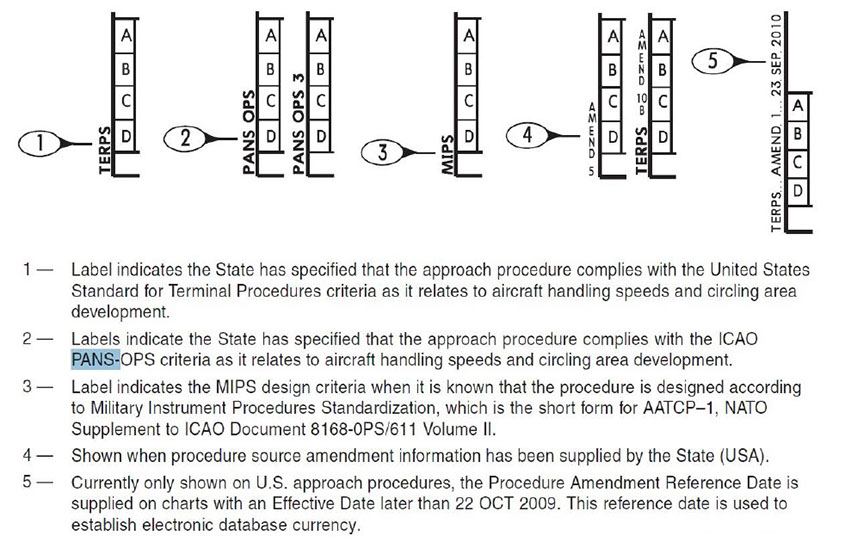
The first step is to determine whether TERPS or Pans Ops criteria were used in the intended procedure. This can easily be done by looking at the bottom left corner of an instrument approach chart. The bottom left corner shall have one of the following notations: TERPS, PANS OPS, PANS OPS 3, MIPS
Labels with PANS OPS or PANS OPS 3 indicate that the State has specified that the approach procedure complies with the ICAO PANS-OPS criteria as it relates to aircraft handling speeds and circling area development. Airports with MIPS are fairly uncommon and are based on military designed procedures and will require additional research by crewmembers to delineate the differences from TERPS.
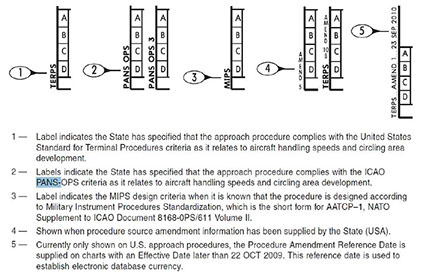
Chart Construction Criteria (TERPS, PANS OPS, etc.)
Course Reversals
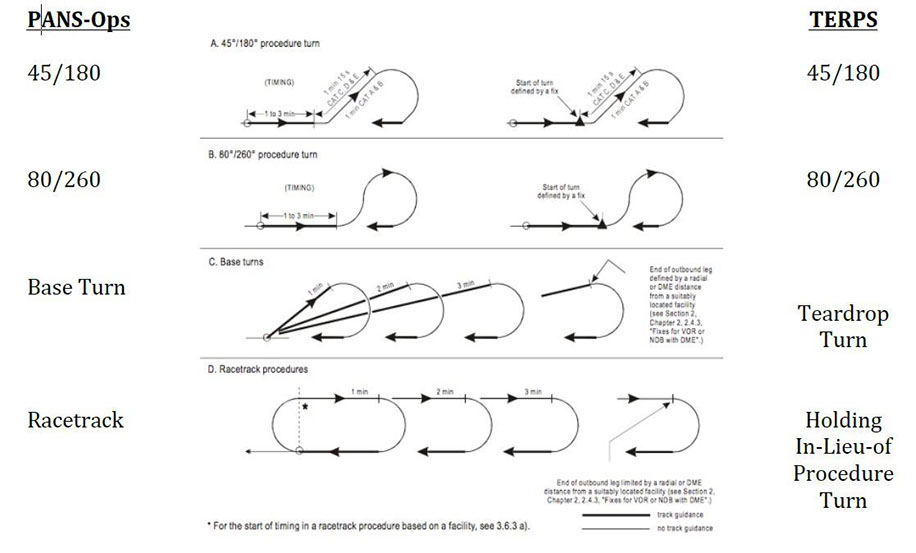
Course reversals in Pans-Ops vs TERPS are also different. In many ICAO countries the choice of course reversal is at the discretion of the pilot. For ACI Jet pilots the 80/260 course reversal is not a recommended procedure due to lack of familiarity and the difficulty correcting for wind.
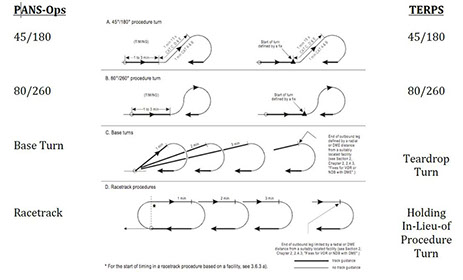
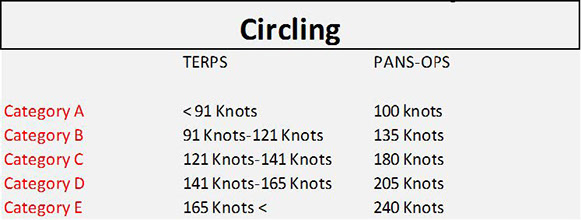

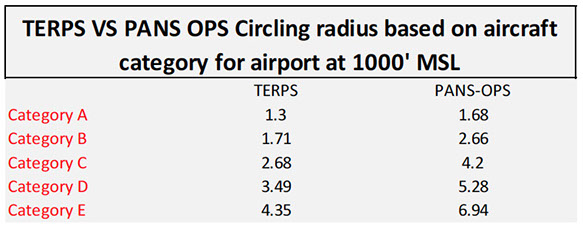
 When determining the appropriate aircraft category, both TERPS and PANS-OPS calculate aircraft category based on 1.3 VSO in the landing configuration at the maximum certified landing weight. Pans-OPS has different maximum circling speeds though, as seen above. The higher circling speed is permissible due to the fact that the circling radius is much larger. Determining the circling radius for Pans-Ops is more complicated than TERPS, but generally it uses TAS at the circling altitude with 25 knots of wind and a maximum of 20 degrees of bank. TERPS will use the appropriate aircraft category speed at threshold height and will increase bank angle depending on the aircraft category. The circling distance is also calculated using the formula (2xradius + straight segment) for PANS-OPS and (radius + straight segment) for TERPS.
When determining the appropriate aircraft category, both TERPS and PANS-OPS calculate aircraft category based on 1.3 VSO in the landing configuration at the maximum certified landing weight. Pans-OPS has different maximum circling speeds though, as seen above. The higher circling speed is permissible due to the fact that the circling radius is much larger. Determining the circling radius for Pans-Ops is more complicated than TERPS, but generally it uses TAS at the circling altitude with 25 knots of wind and a maximum of 20 degrees of bank. TERPS will use the appropriate aircraft category speed at threshold height and will increase bank angle depending on the aircraft category. The circling distance is also calculated using the formula (2xradius + straight segment) for PANS-OPS and (radius + straight segment) for TERPS.
It is important that crewmembers do not mix PANS-OPS speeds with TERPS radius and that they have a general awareness of how the procedure construction differs.
JOIN THE CONVERSATION

The material contained on this site is to be used for reference only. You should always follow your primary resources first (aircraft manuals, government regulations, etc.).
Savant Aero is no way affiliated with any aircraft manufacturers.

